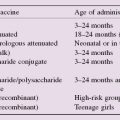So far we have been considering the successful side of the immune system – its defence role against microbial infection (bottom left). The effectiveness of this is due to two main features: (i) the wide range of pathogens it can specifically recognize and remember, and (ii) the strong non-specific mechanisms it can mobilize to eliminate them.
Unfortunately, both of these abilities can also operate against their possessor.
The nomenclature of these immunopathological reactions has never been very tidy. Originally, any evidence of altered reactivity to an antigen following prior contact was called ‘allergy’, while ‘hypersensitivity’ was defined as ‘acute’, ‘immediate’ or ‘delayed’ on the basis of the time taken for changes – often quite harmless skin test reactions – to appear. In fact ‘harmful immunity’ can arise as a result of inappropriate or excessive responses to foreign antigens (innocuous ones as in many common allergies and allogeneic transplants or as a by-product of the response to pathogens) or to self antigens (giving rise to autoimmunity). In all these cases the basic mechanisms are often shared and can be usefully classified according to the very influential scheme of Gell and Coombs (extreme right). However, this classification only covers hypersensitivities involving adaptive immunity, and it is becoming increasingly clear that many of the most common degenerative diseases, such as atherosclerosis and Alzheimer’s disease are caused by chronic activation of innate immunity, especially macrophages, independently of adaptive immunity. A modified classification that includes ‘innate hypersensitivities’ is therefore probably needed.
TH
Stay updated, free articles. Join our Telegram channel

Full access? Get Clinical Tree




